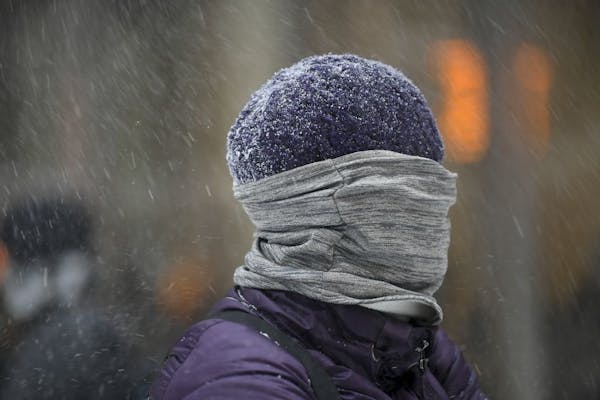For some Minnesota students, gone are the snow days from school that can be spent on snowmen, sledding and drinking hot chocolate.
Rather than racking up more days for students to make up later on, some school districts across the state are implementing what is called e-learning when school is canceled due to weather.
Students in those districts are expected to use their devices to complete assignments from home when extreme conditions shutter school.
"We turned what would have been a day without any formal learning, or typically a nonschool day, into a productive learning day," said Shakopee Public Schools Superintendent Mike Redmond. "We see [e-learning days] having every bit the same merit. It's going to be a different type of learning, but we want great learning during these days."
During the recent polar vortex, Shakopee district officials implemented their first round of what they call Connected Learning Days (CoLD) as their schools stayed closed for three straight days.
Pre-K through fifth-grade students had pre-assigned activities, while students in sixth through 12th grades connected with their teachers and worked on assignments related to 21st-century skill set — summarizing an article from a Minnesota news source, or maybe taking a photo of themselves shoveling a neighbor's driveway. The e-learning curriculum generally takes about two hours rather than the whole day.
Jen Tabios, a Shakopee High School teacher and mother of a ninth- and fourth-grader in the district, said the first round of CoLD was successful — though getting her fourth-grader to do school work on a snow day was a challenge.
"I would say the completion rate from my kids has been higher than I had anticipated," Tabios said. "And if they have questions, they've e-mailed or reached out through social media to ask those questions."
She said that the initial feedback from students wasn't positive: "They said, 'What's happening in America, why can't we just have a snow day?' " But after a practice CoLD day in November, students weren't as critical of the e-learning days.
Jenna Koehn, a ninth-grader at Shakopee High, said she spent her CoLD mornings on school assignments and afternoons with friends and her dog. "I thought it was really nice because I got to do school which is kind of the point of it, but then I got to spend the day like a regular snow day," she said.
Most school districts in Minnesota close several days each winter because of bad weather. State statutes allow a district up to five days of instruction to be provided online annually due to inclement weather.
"It does change the dynamic of a snow day," Redmond said. But the district doesn't want to extend the school year into summer, he said: "Those days in June are usually pretty nice."
Former Shakopee Superintendent Gary Anger first brought the idea of e-learning days to the district after using it in the Zumbrota-Mazeppa School District in southeastern Minnesota, where he had been superintendent. Redmond also had used e-learning days in the Goodhue Public Schools, his former district. And Tri-City United Public Schools in Montgomery, Minn., provides for five e-learning days during the school year.
"A number of districts are doing this," Redmond said, "A typical question that leaders in one school district ask another, especially when you're talking about weather, is 'Hey, do you have e-learning days?' "
But e-learning days aren't possible for every district. In the Minneapolis Public Schools, internet access isn't available for all students outside of school. When Minneapolis schools closed last week, the district referred students online for resources, though there was no requirement to complete assignments.
On snow days, students in the Minneapolis district are encouraged to check where they stand on current and future assignments and projects. If they have access to the internet, they can find information about prepping and planning for life beyond school.
"We don't have e-learning right now, we don't have the resources right now, but it's something we're looking at," said Dirk Tedmon, a spokesman for the Minneapolis schools. "Part of it is we can't guarantee all students have access to the internet."
Isabella Murray is a University of Minnesota student on assignment for the Star Tribune.

Star Tribune adds Kavita Kumar, Melissa Wind to news organization's leadership

An infamous heist put this North Woods town in the global spotlight. Nervous breakdowns and Hollywood deals ensued.

Six Edina residents explain why they're running for the Hennepin County Board

Edina sophomore two-sport standout on recruiting: 'Gotten a little busy'
![Greg Ketchum put a fresh crate of cherries out for sale at the Patnode's stand, which workers say is the oldest at the farmers market. ] ANTHONY SOUFF](https://arc.stimg.co/startribunemedia/PXAYPLUT6O67HYOFFC6PNPVTSM.jpg?h=91&w=145&fit=crop&bg=999&crop=faces)
